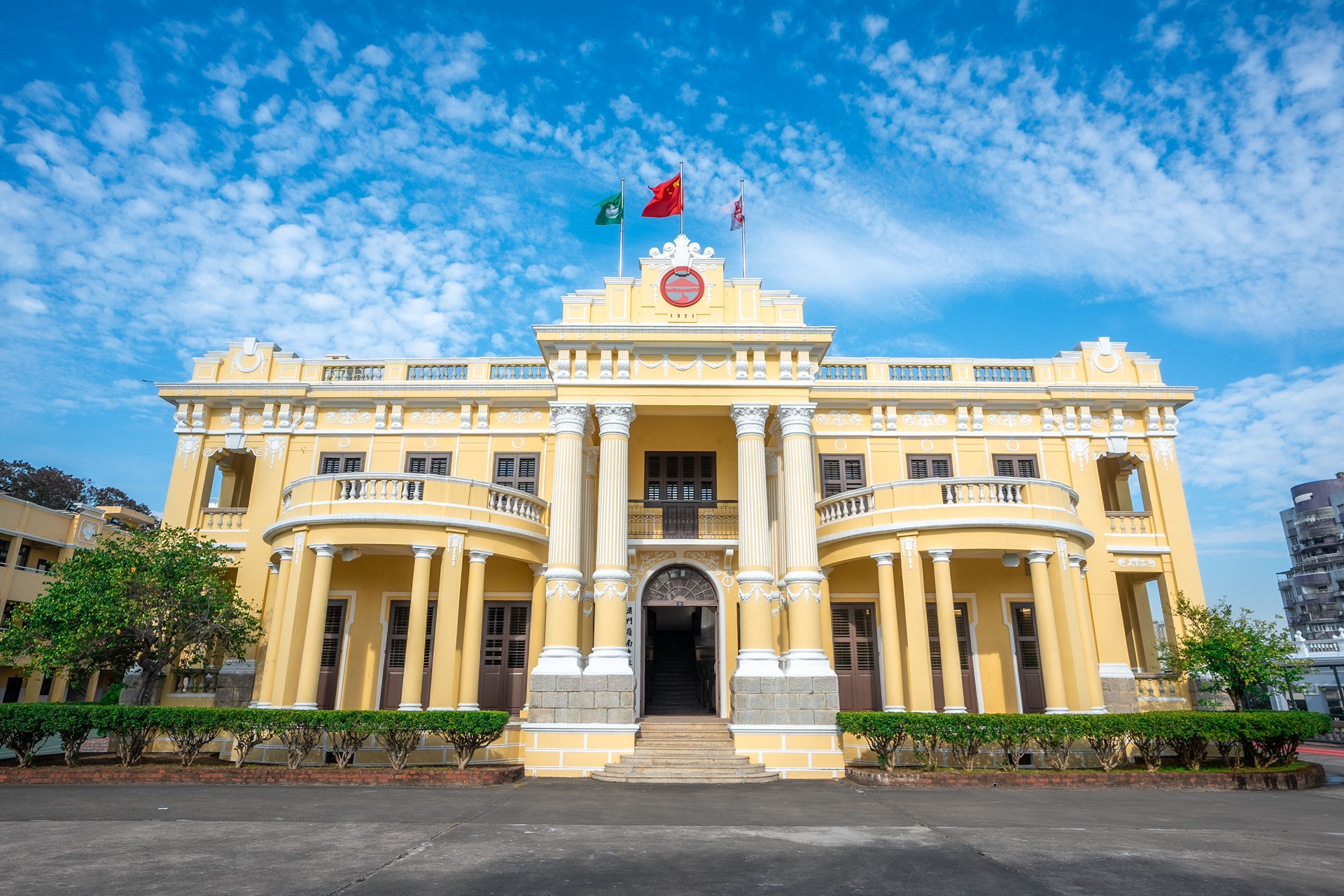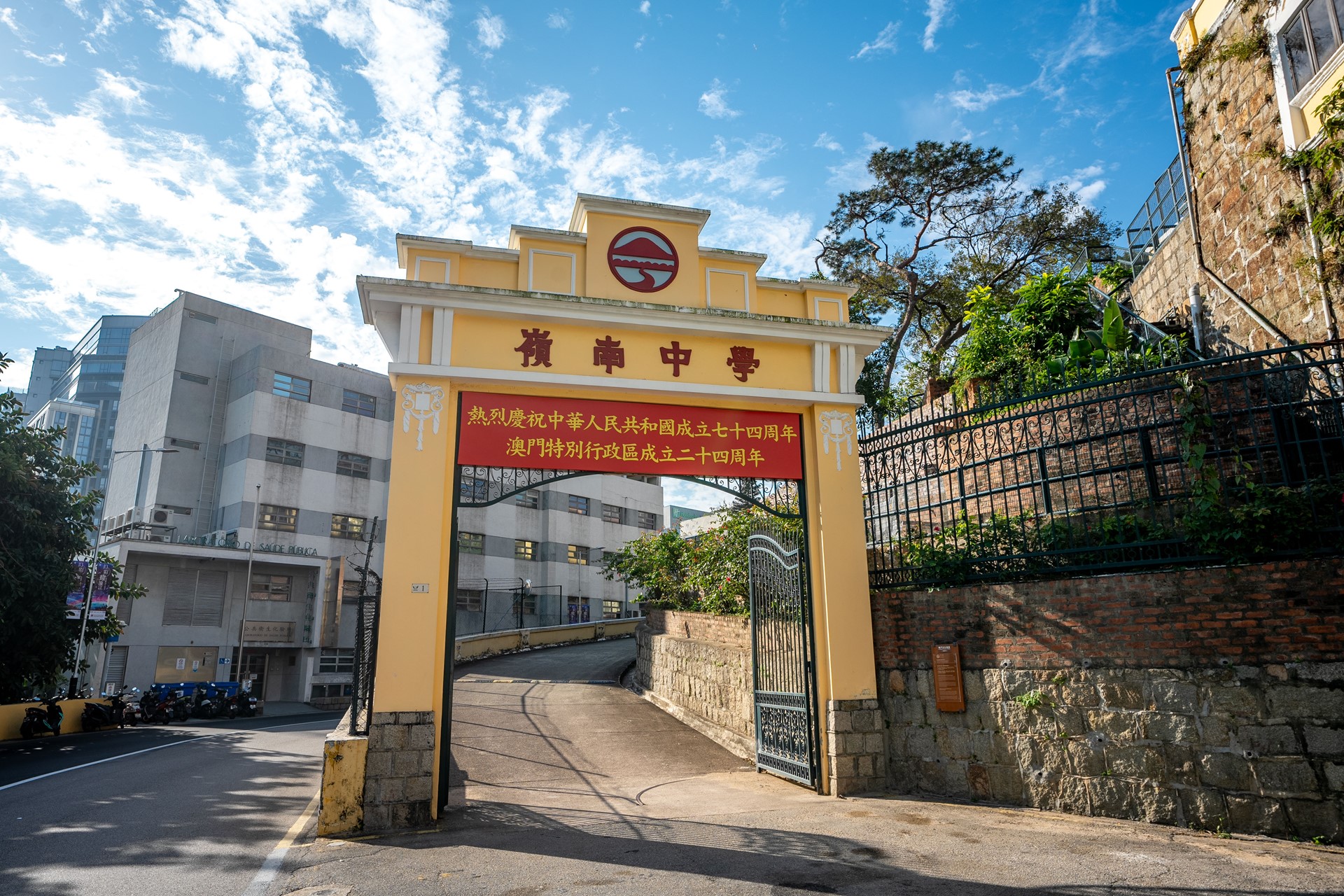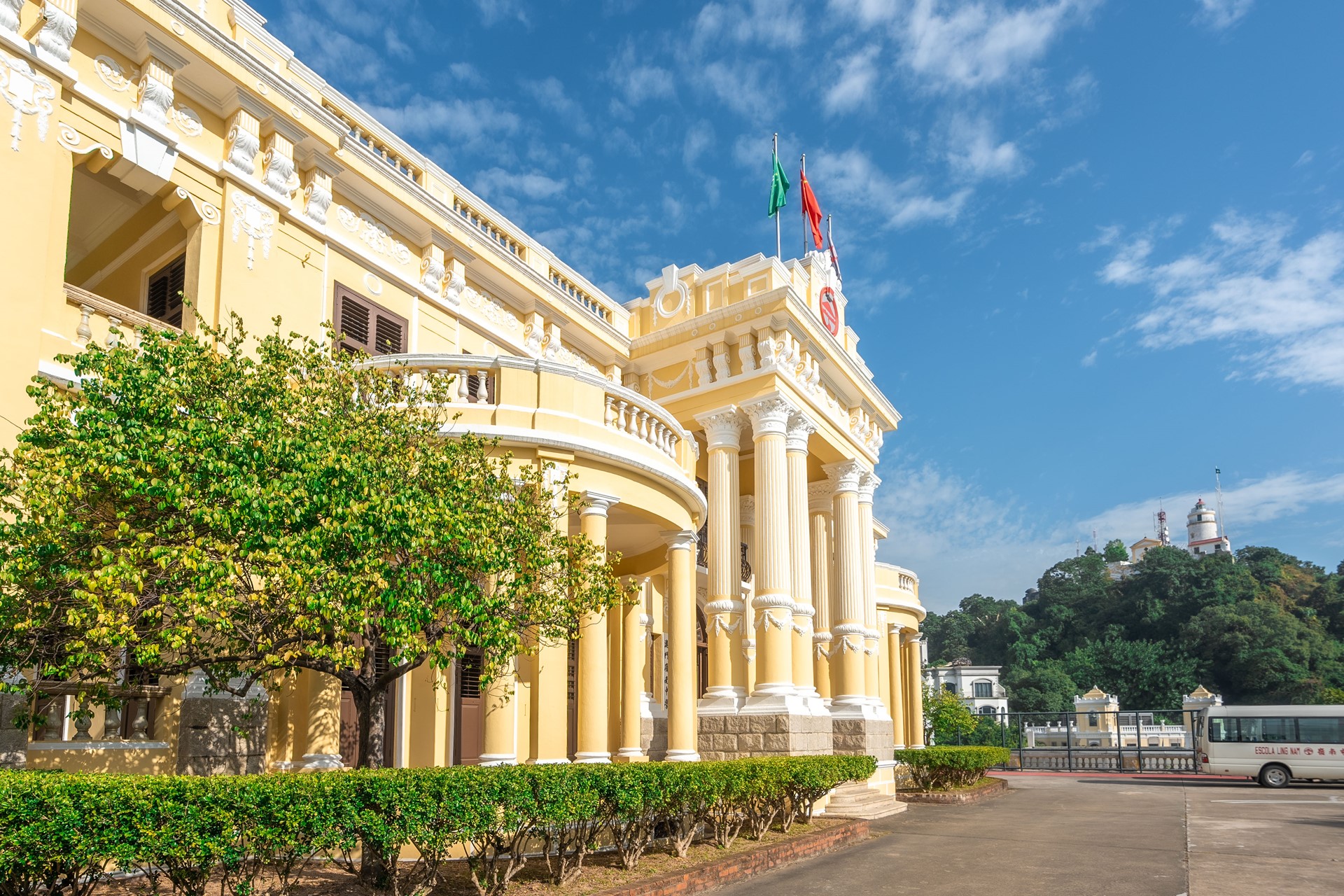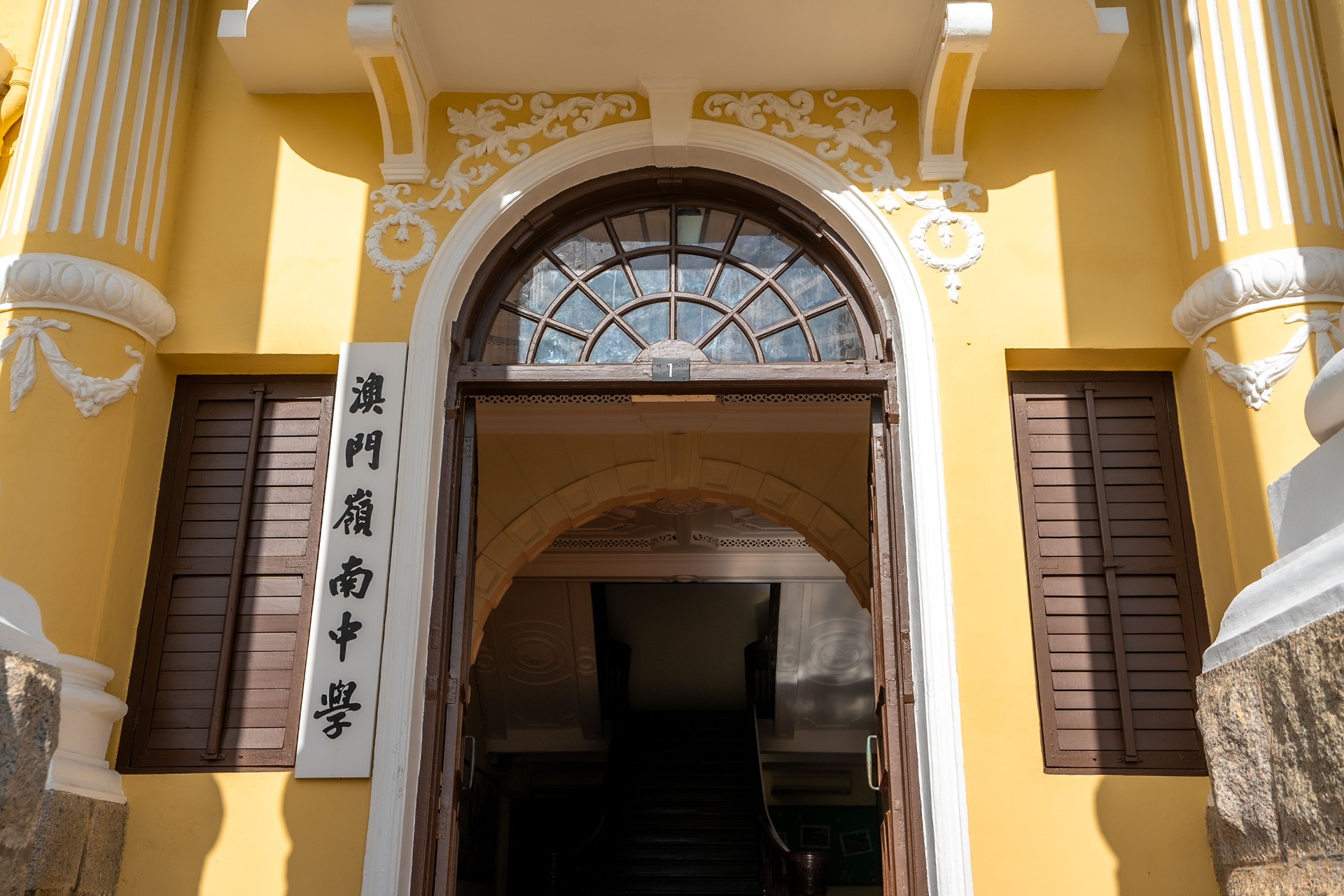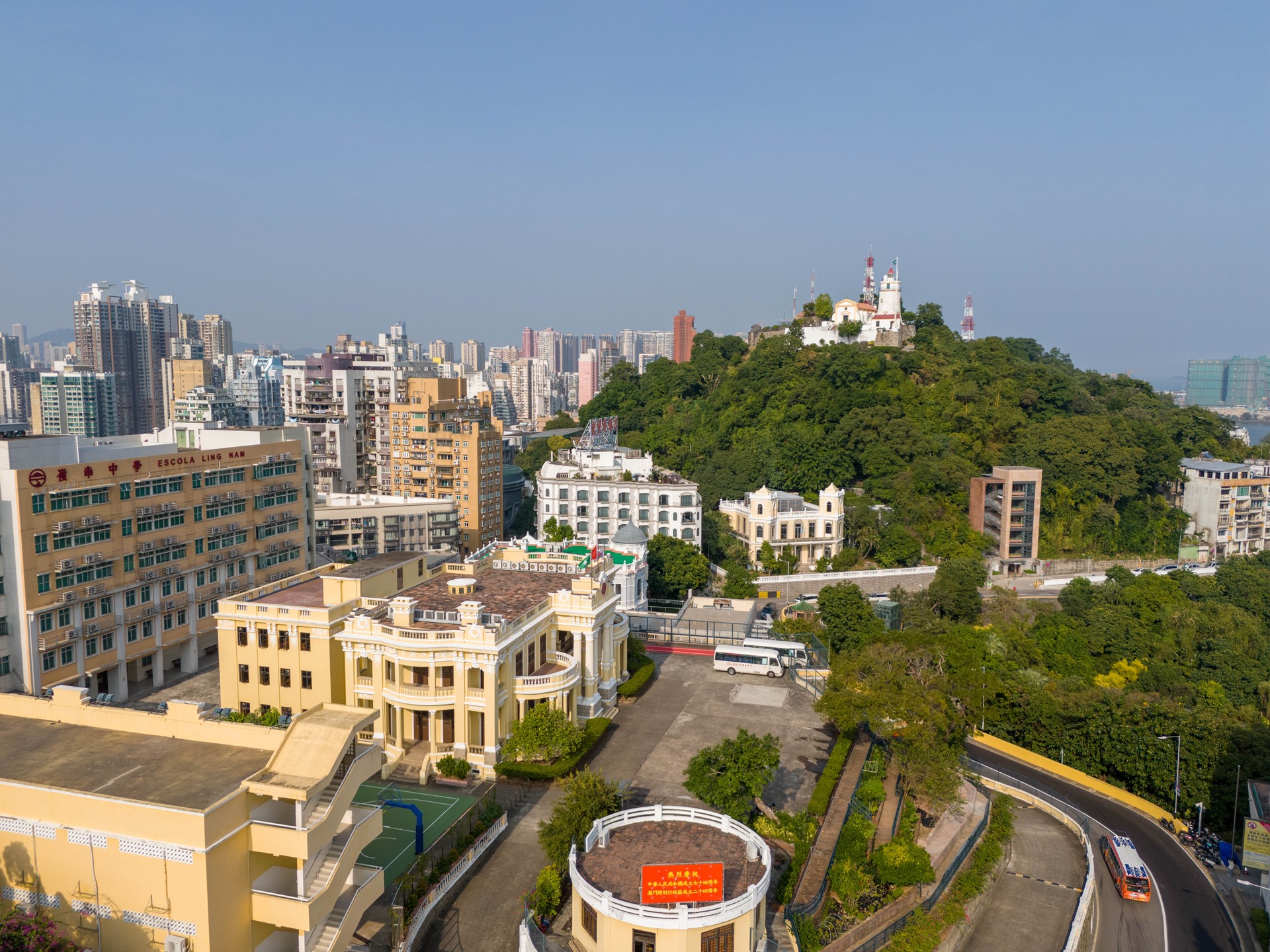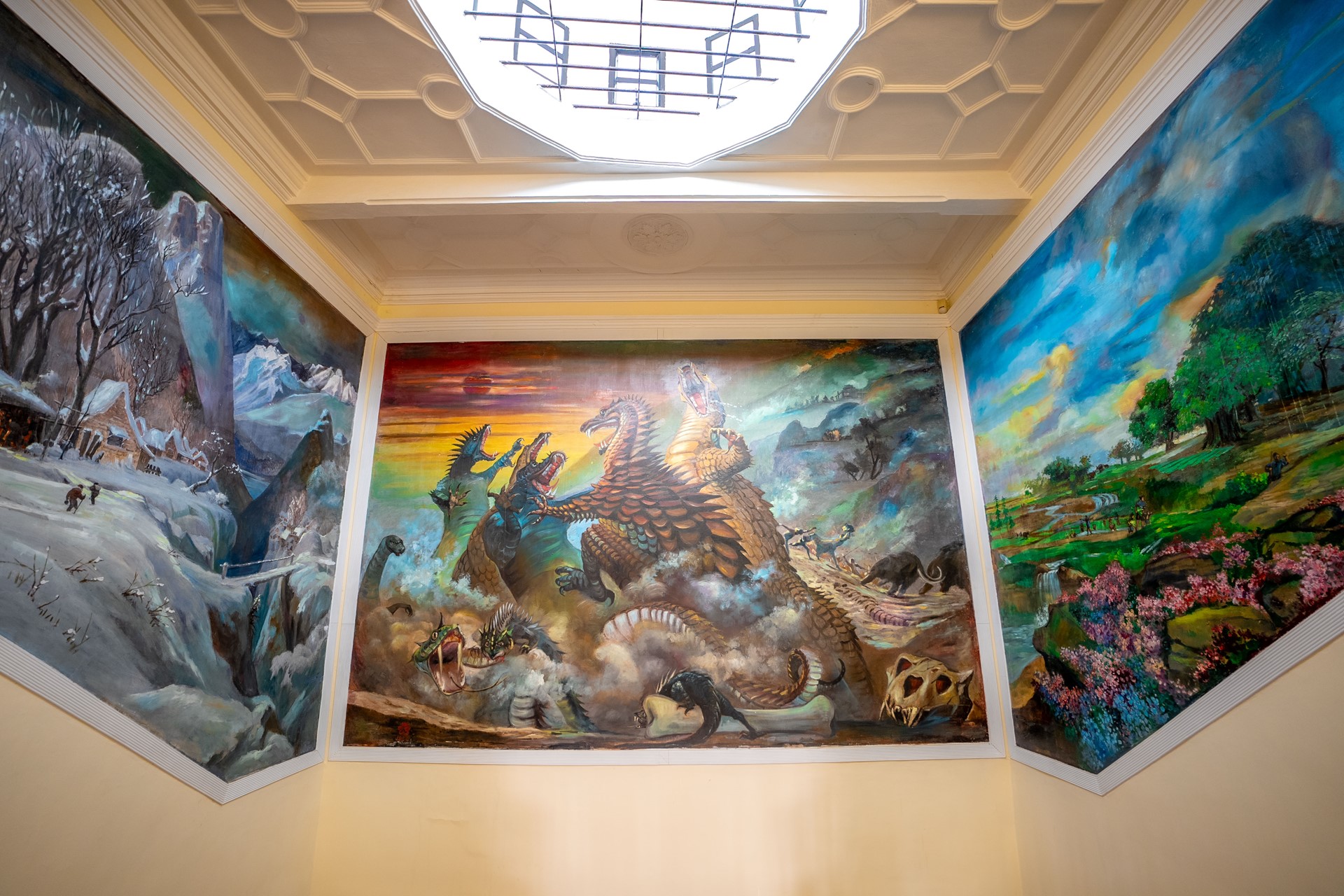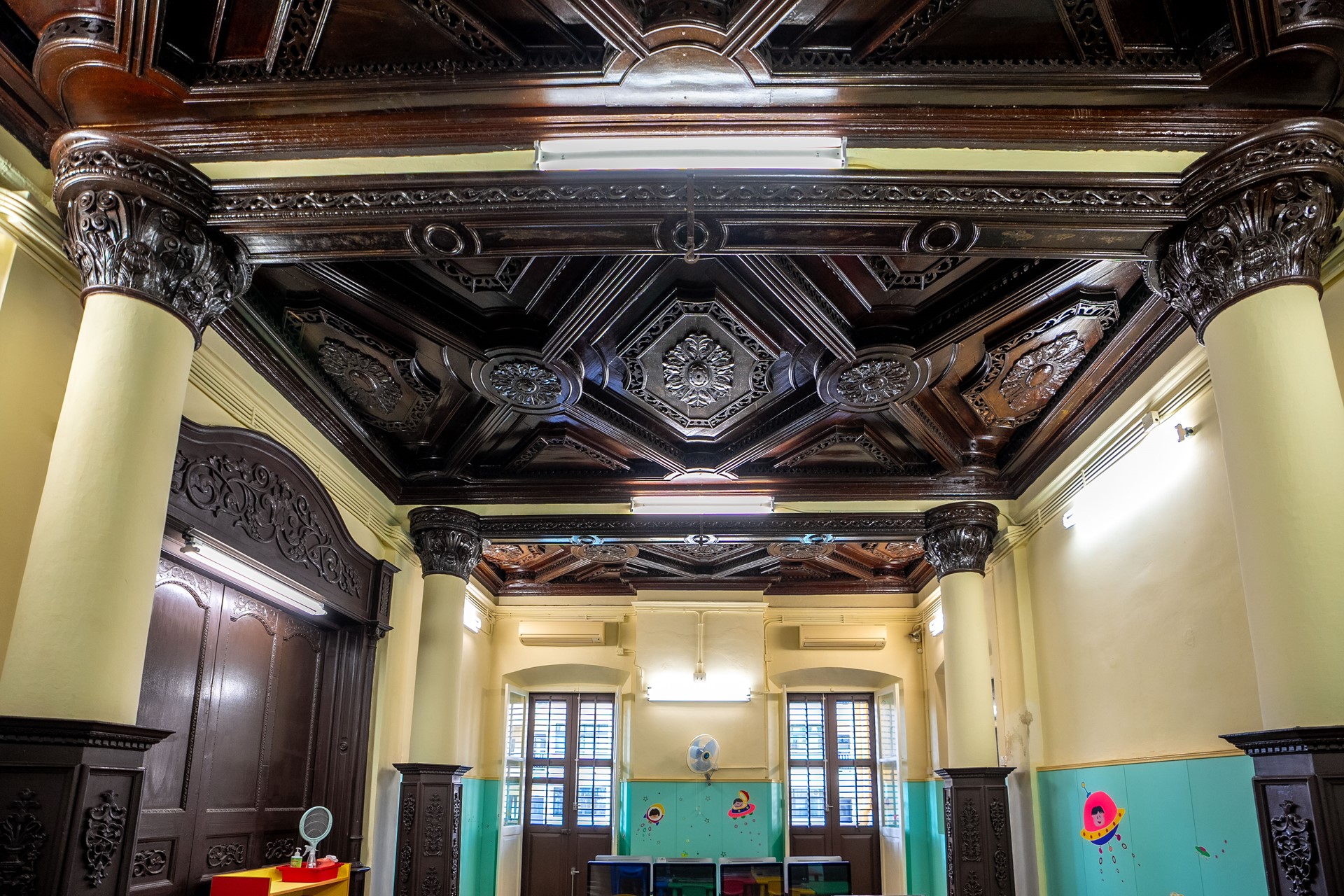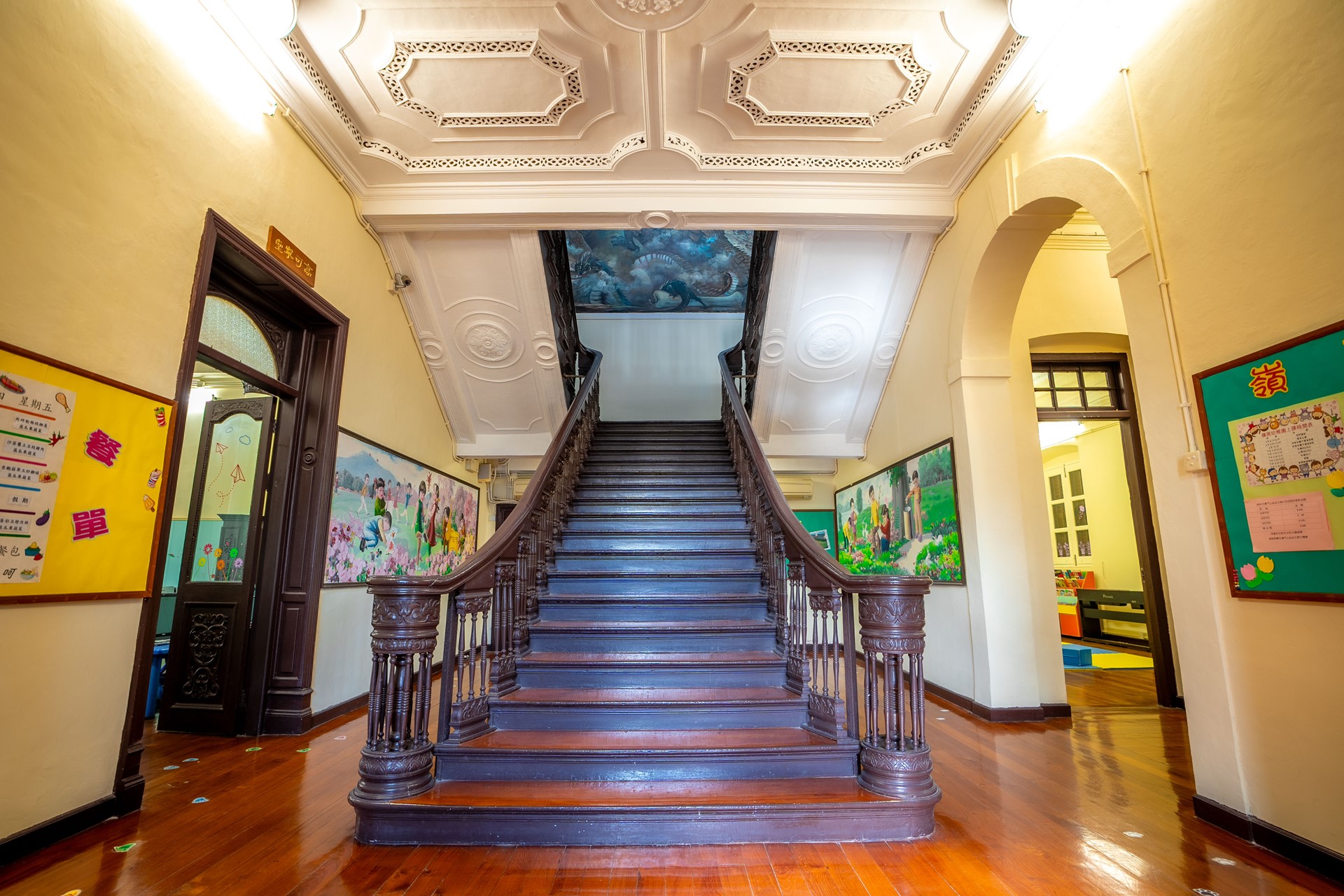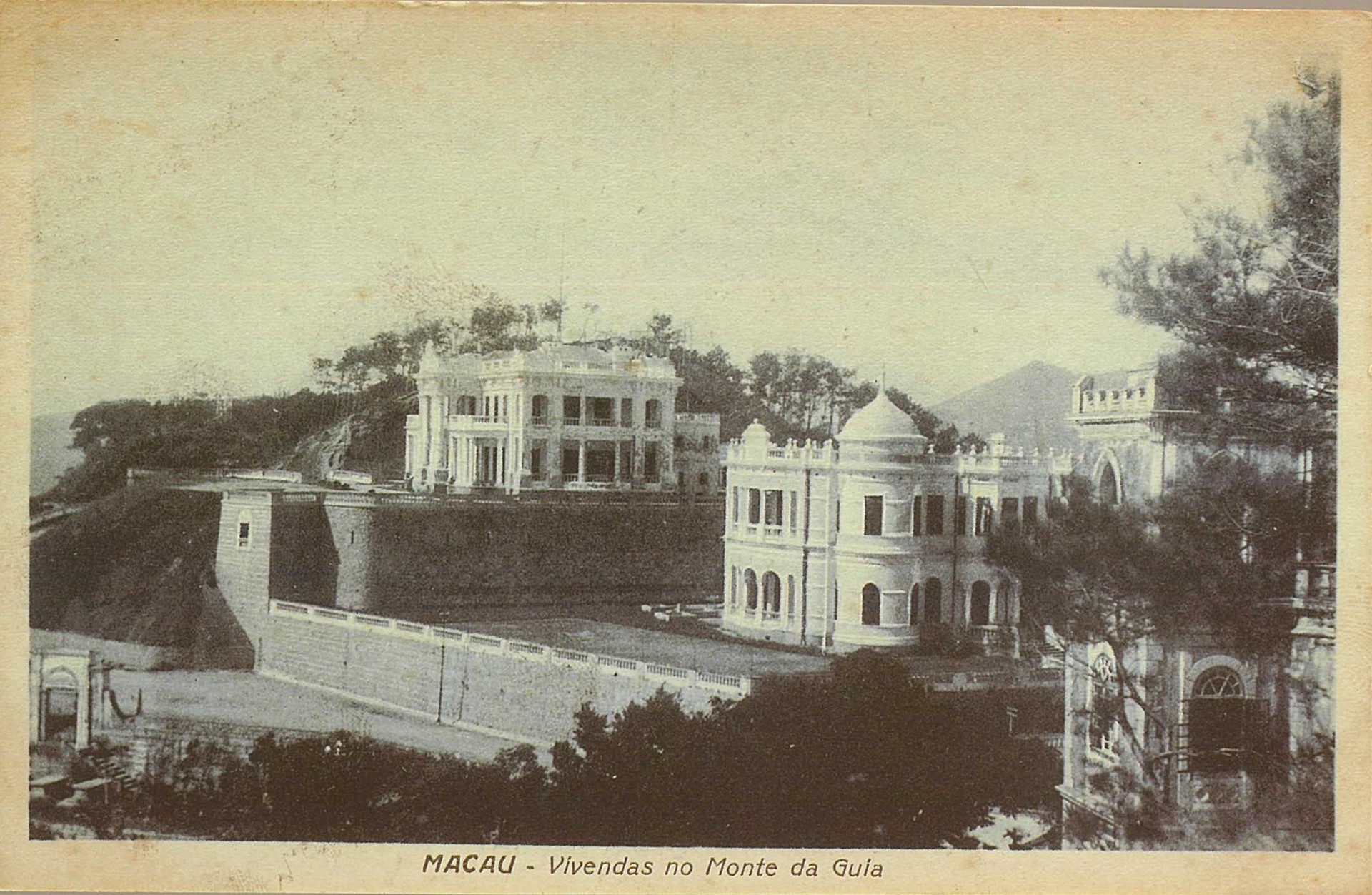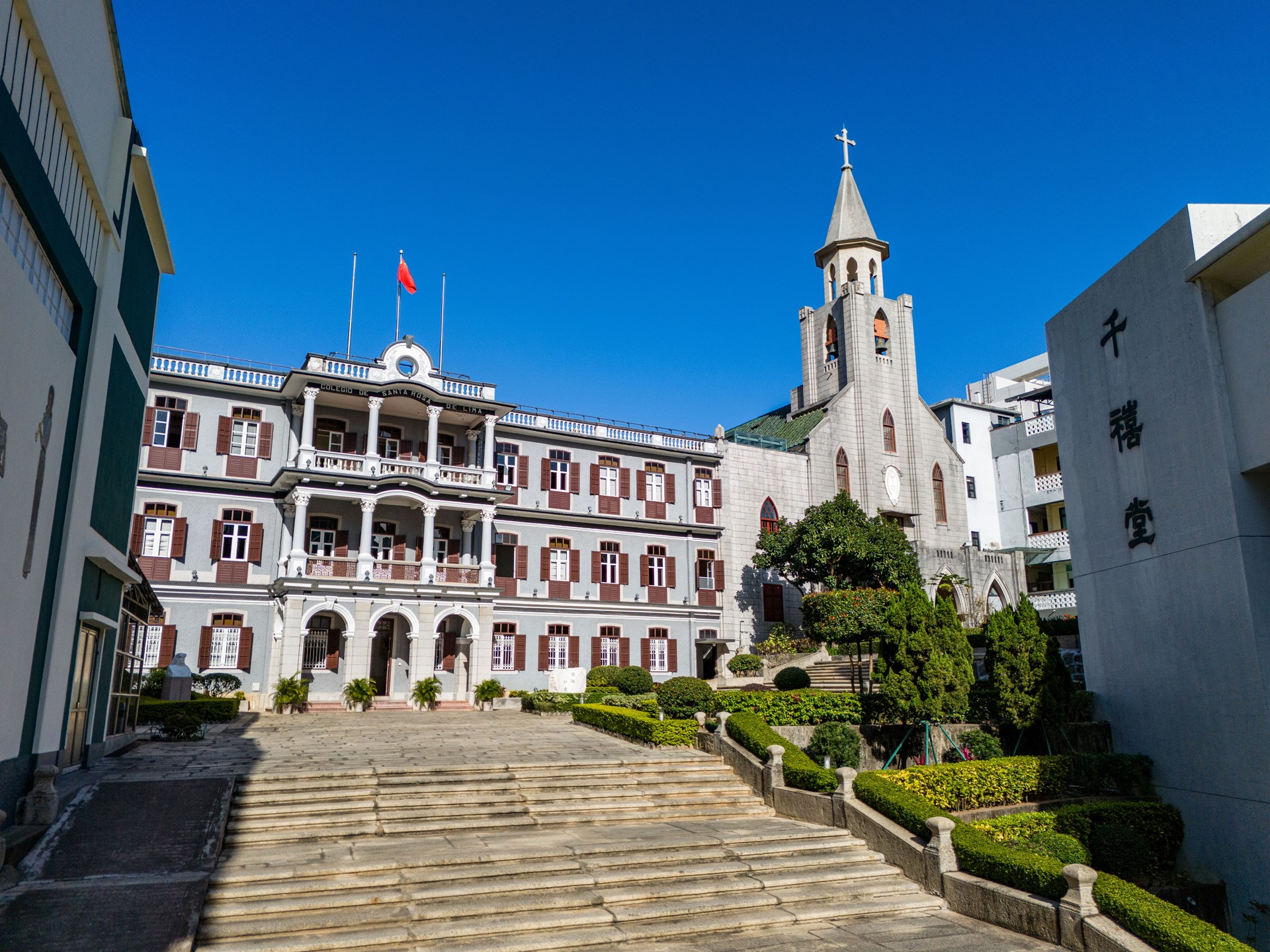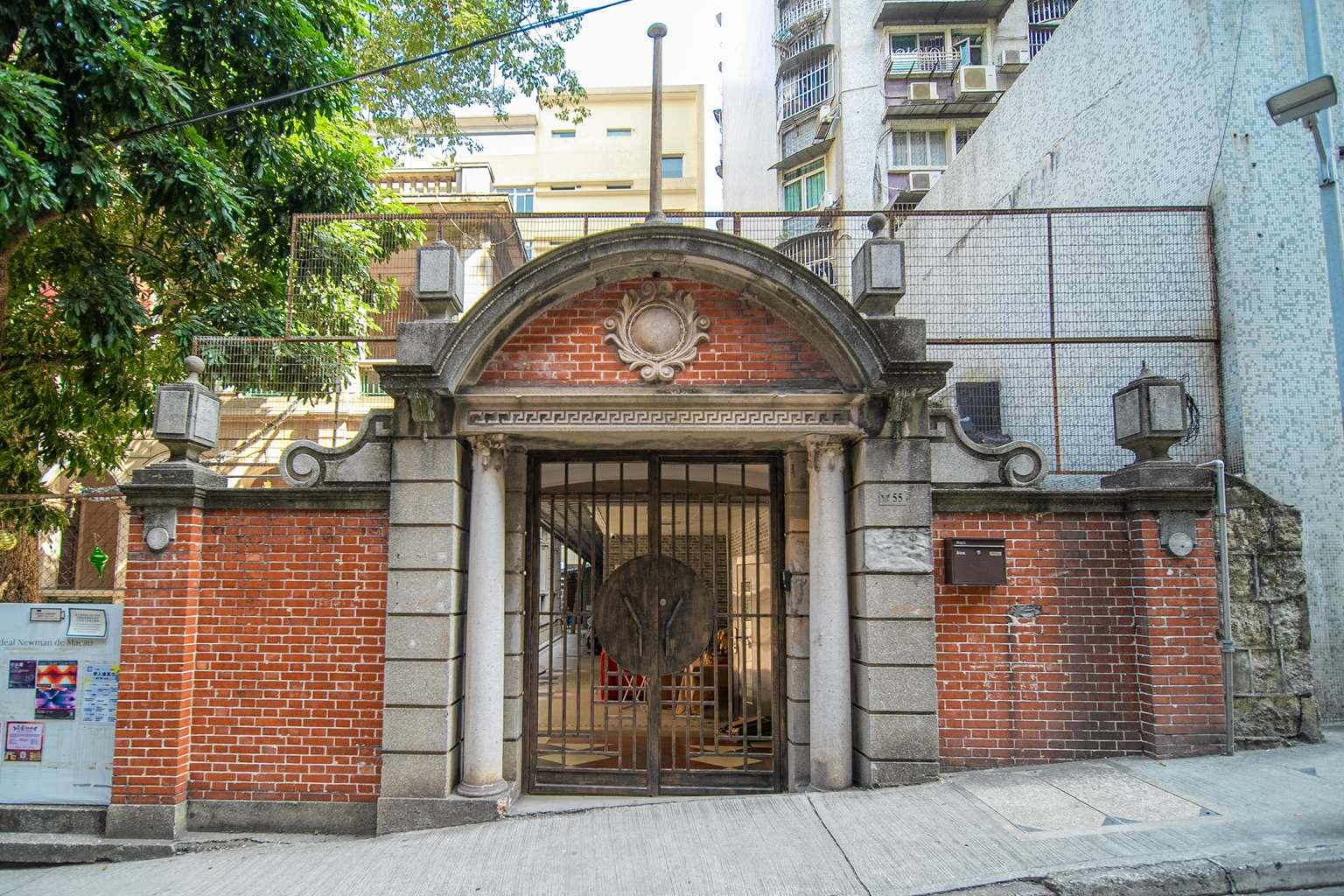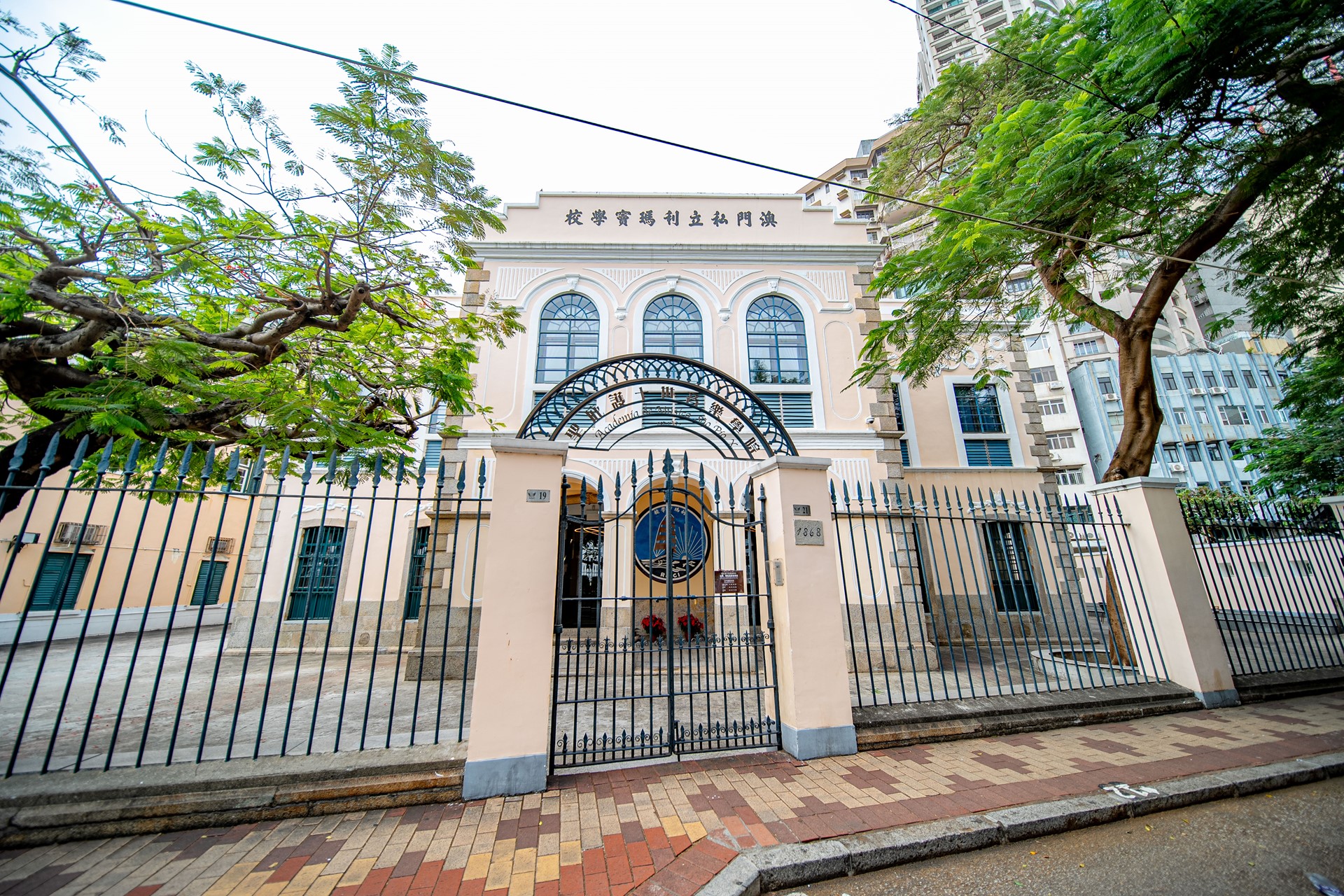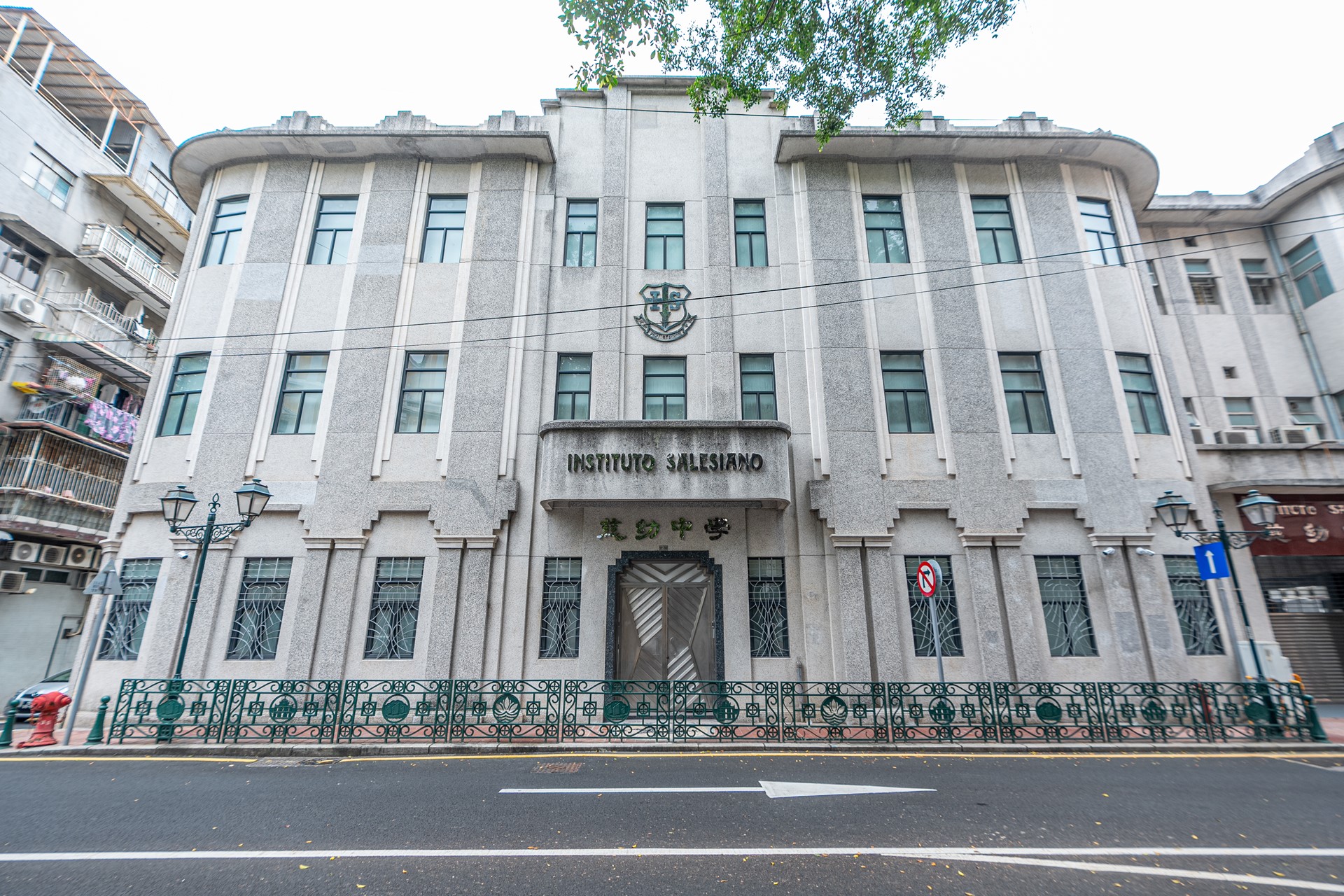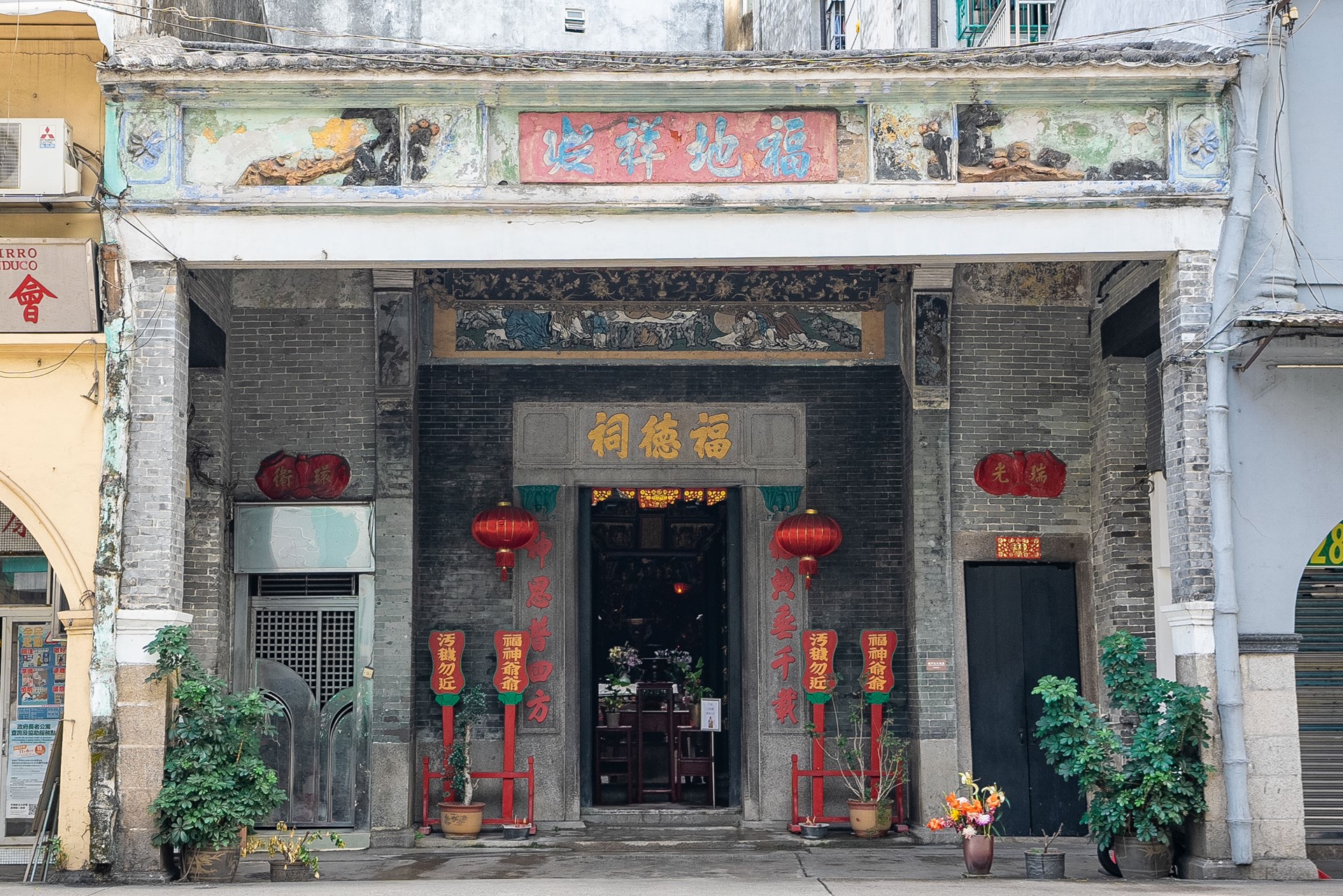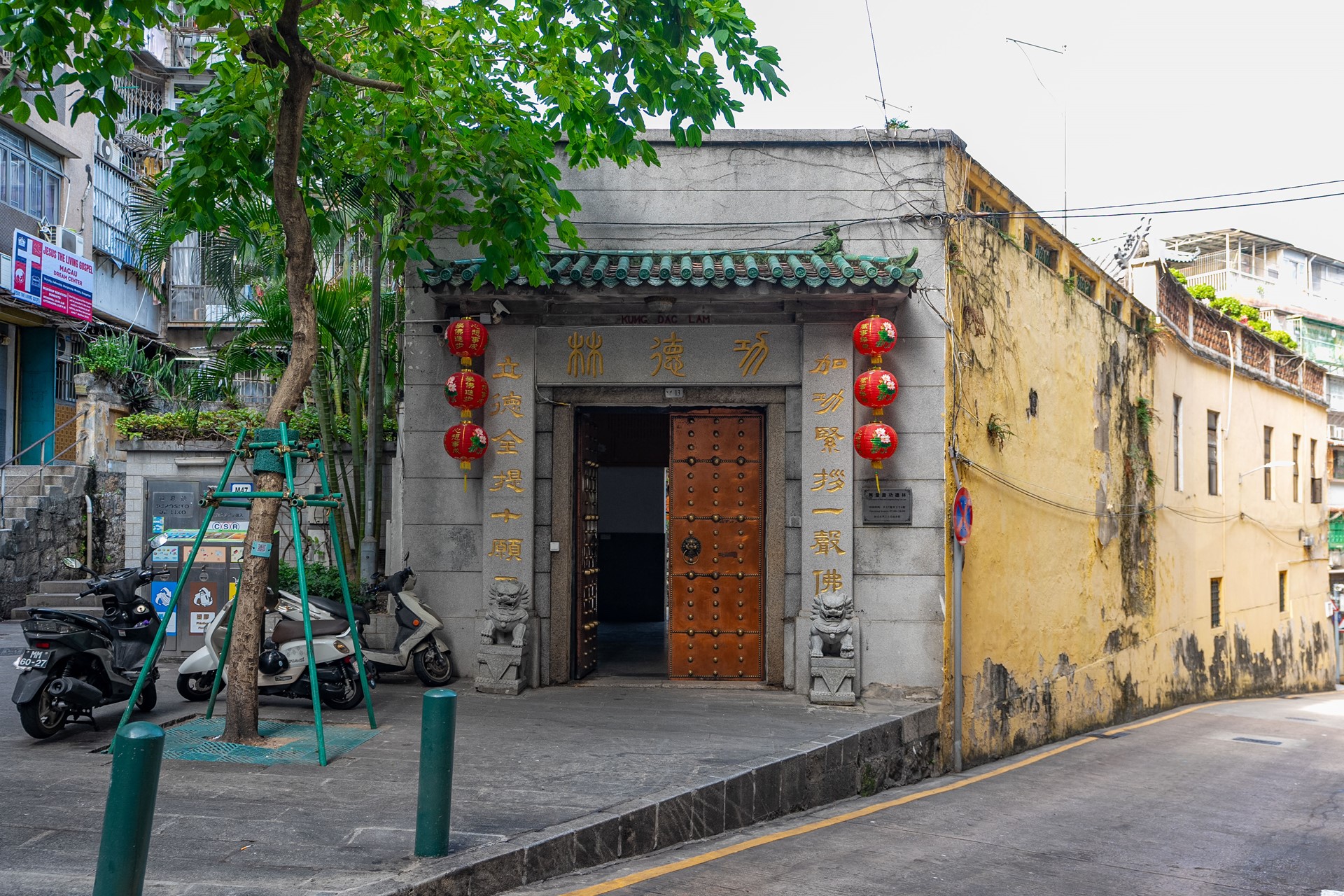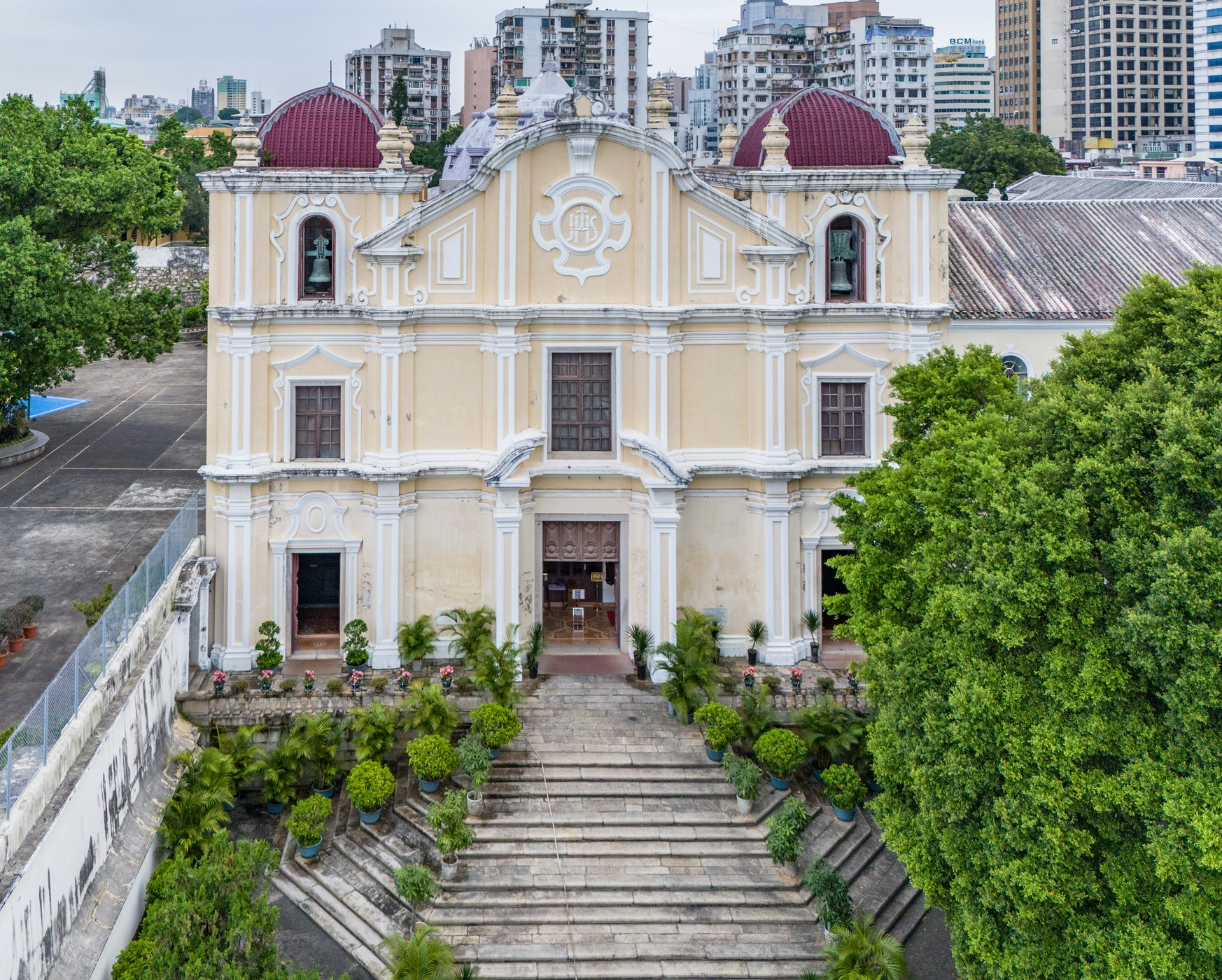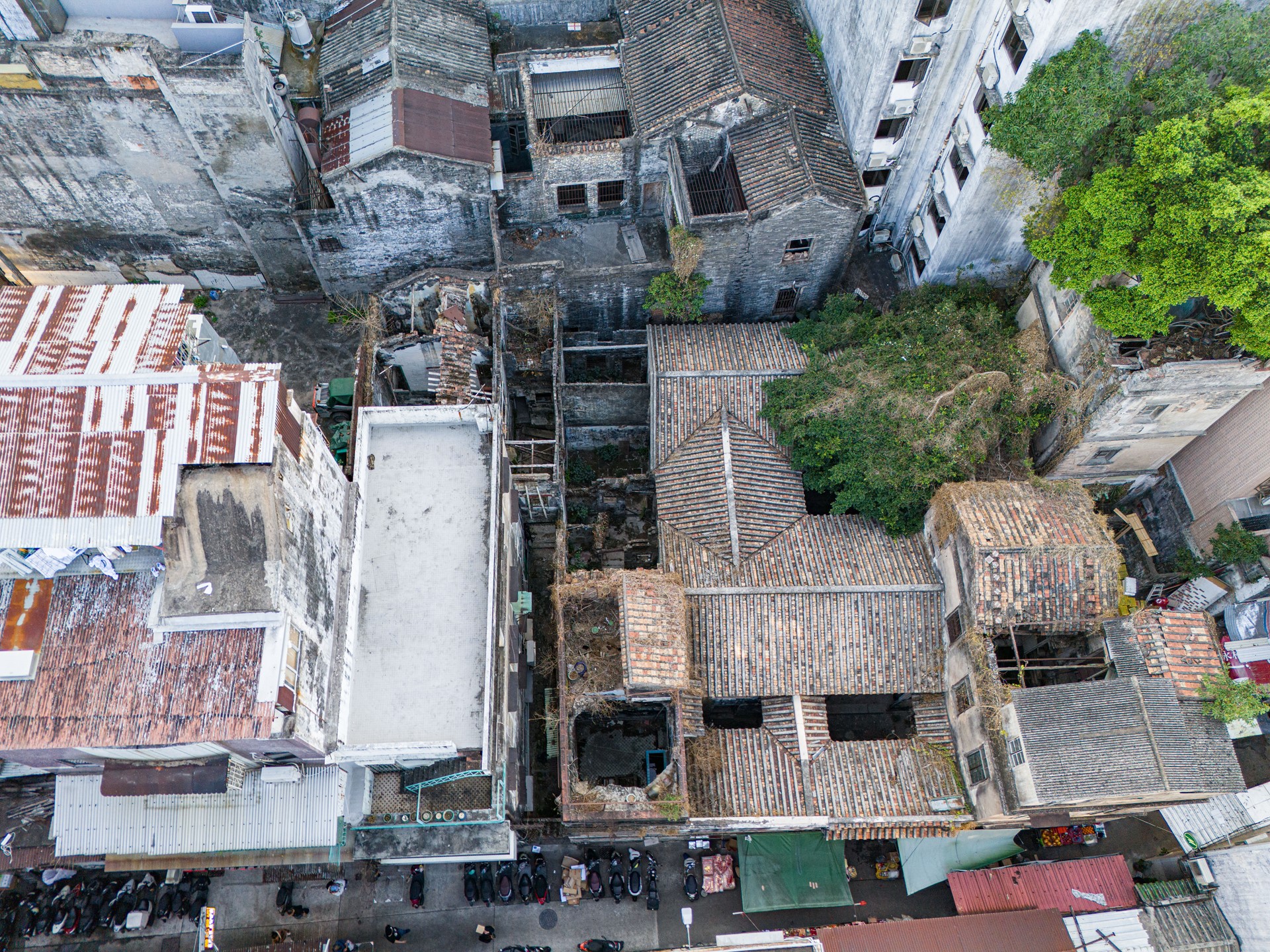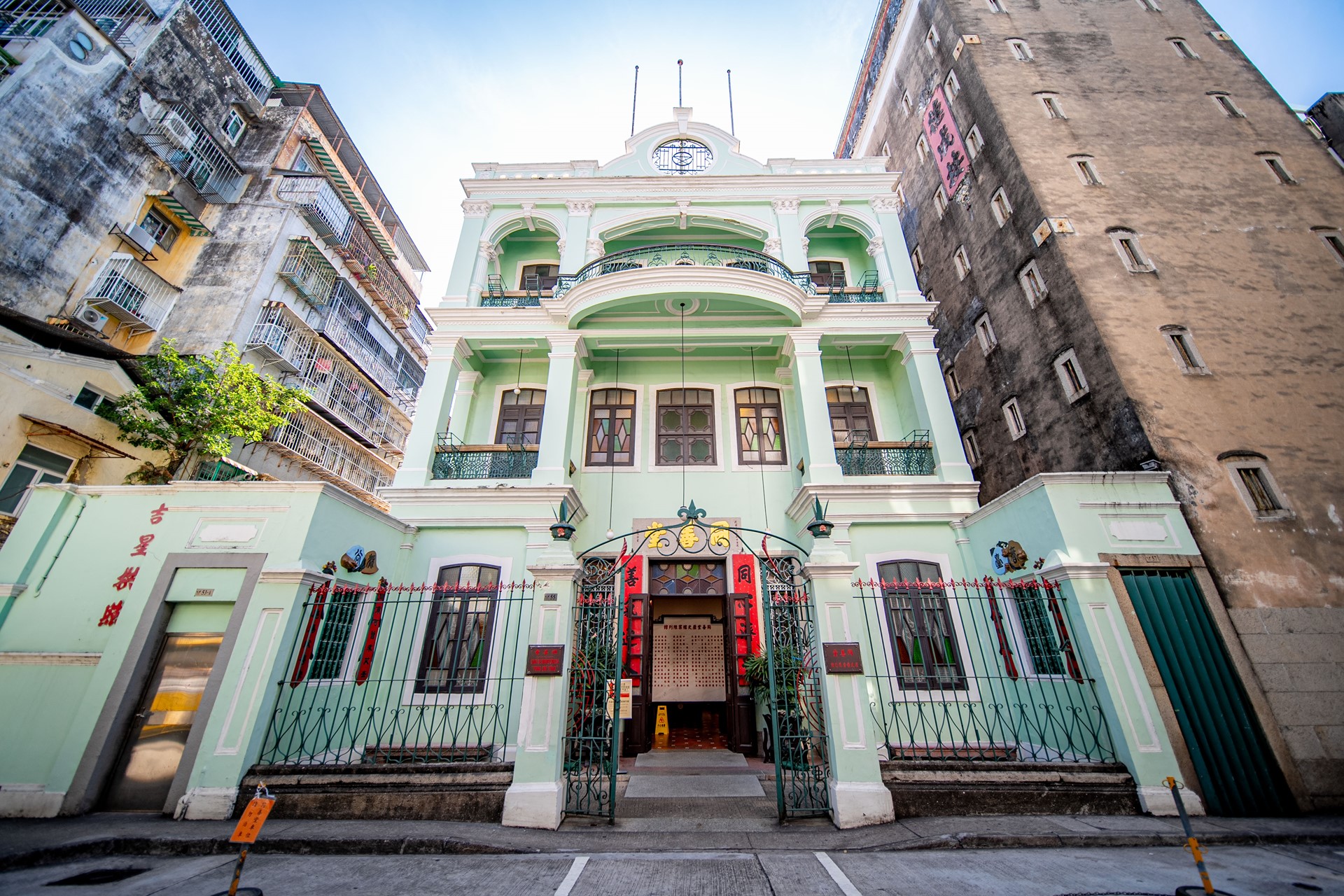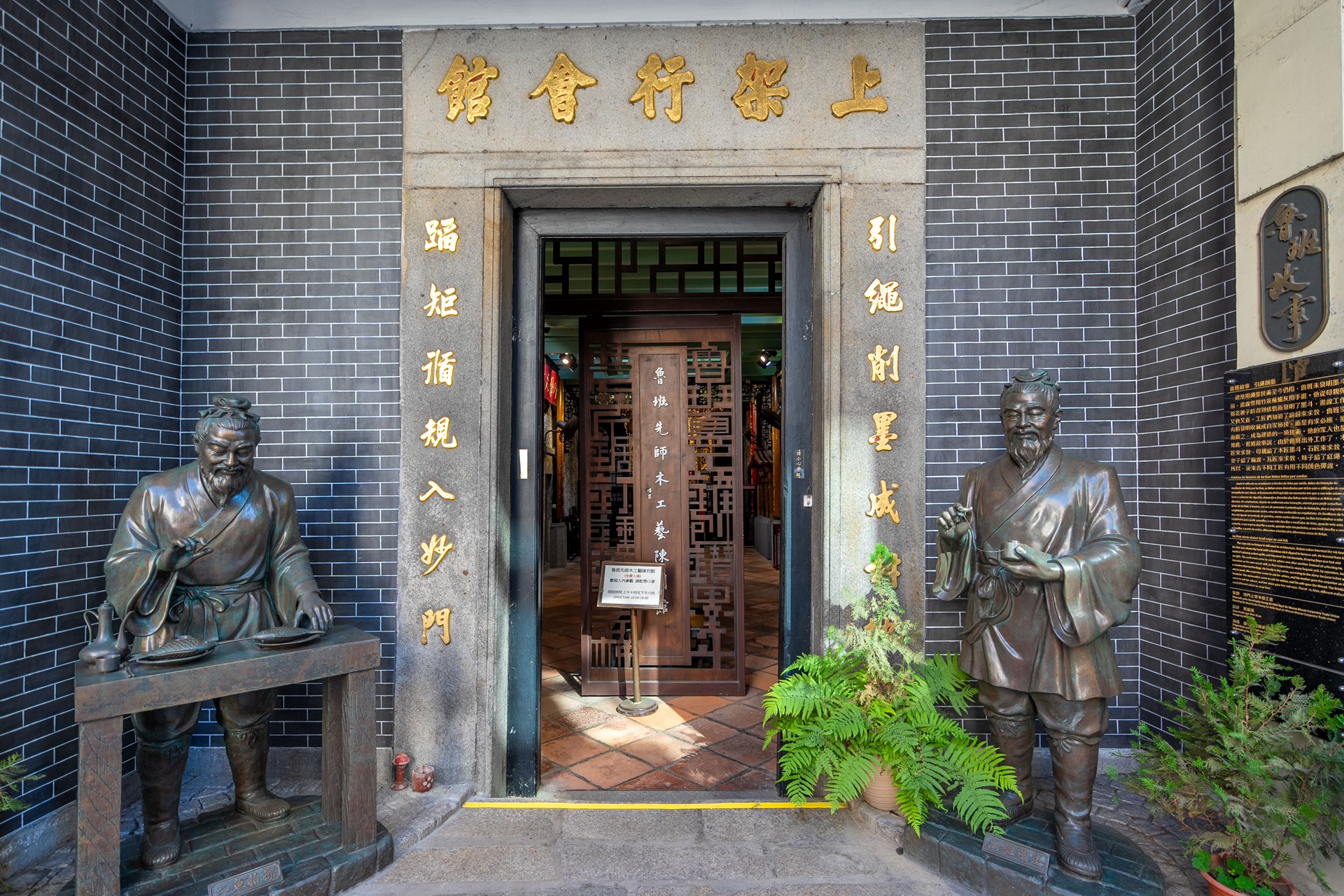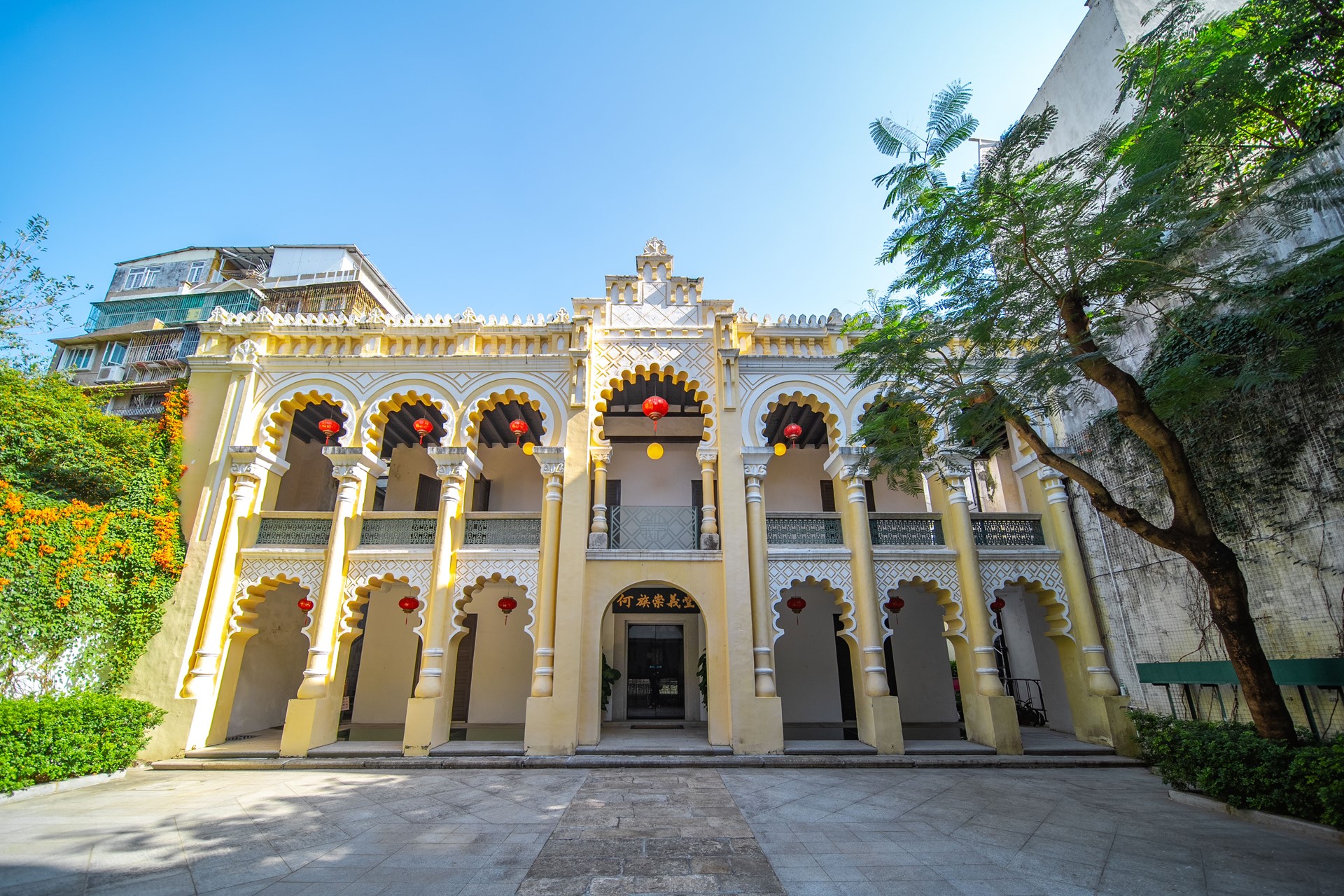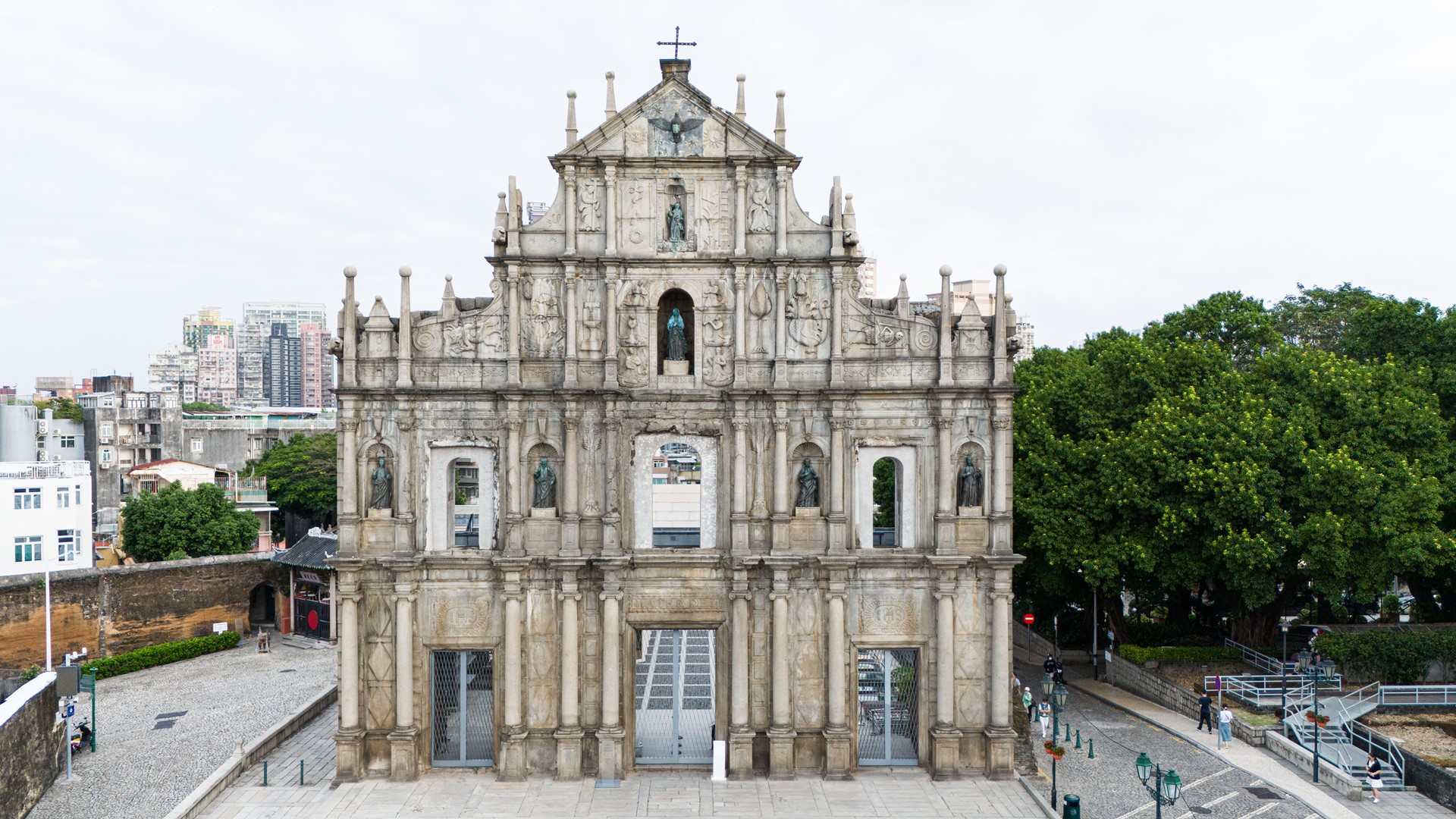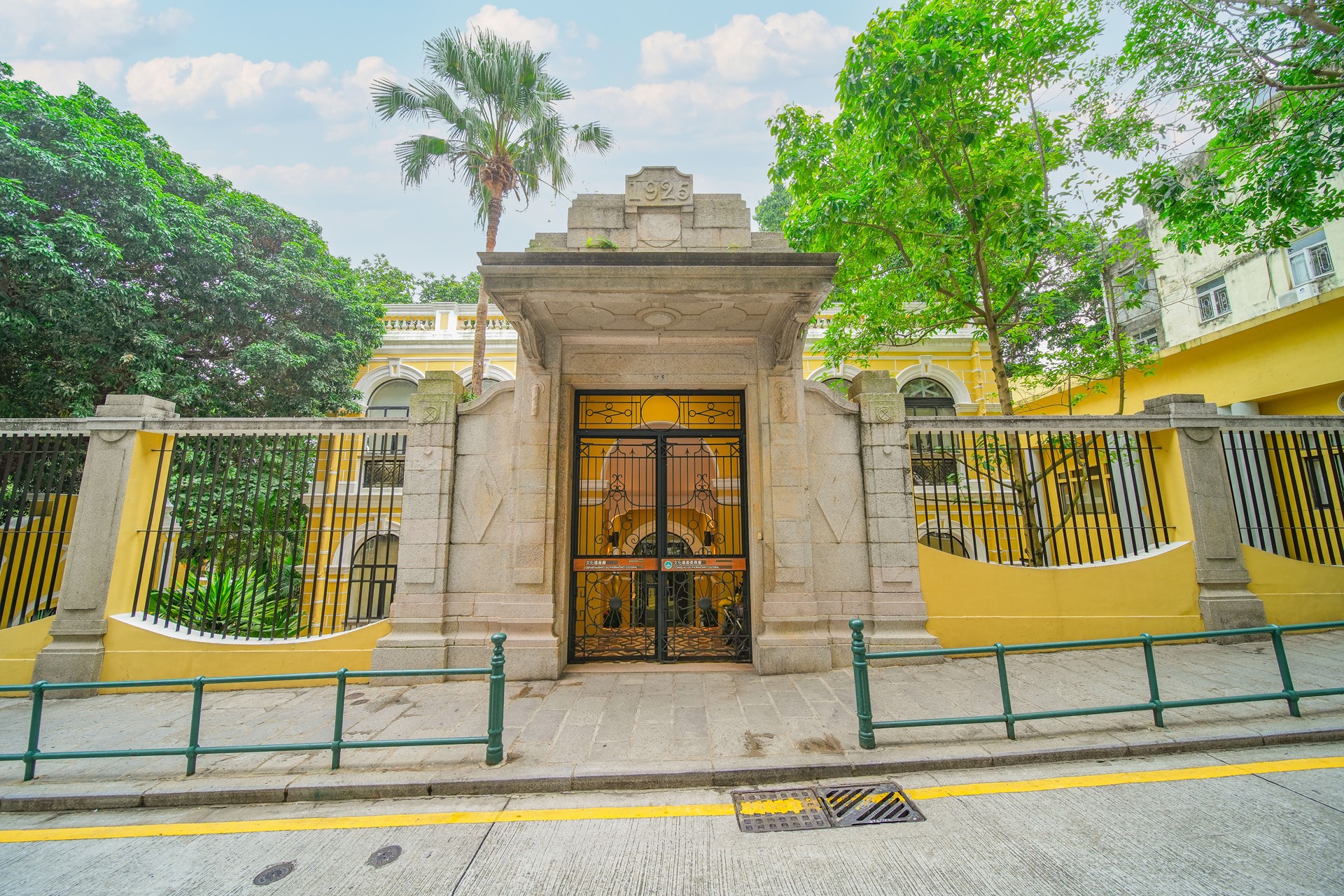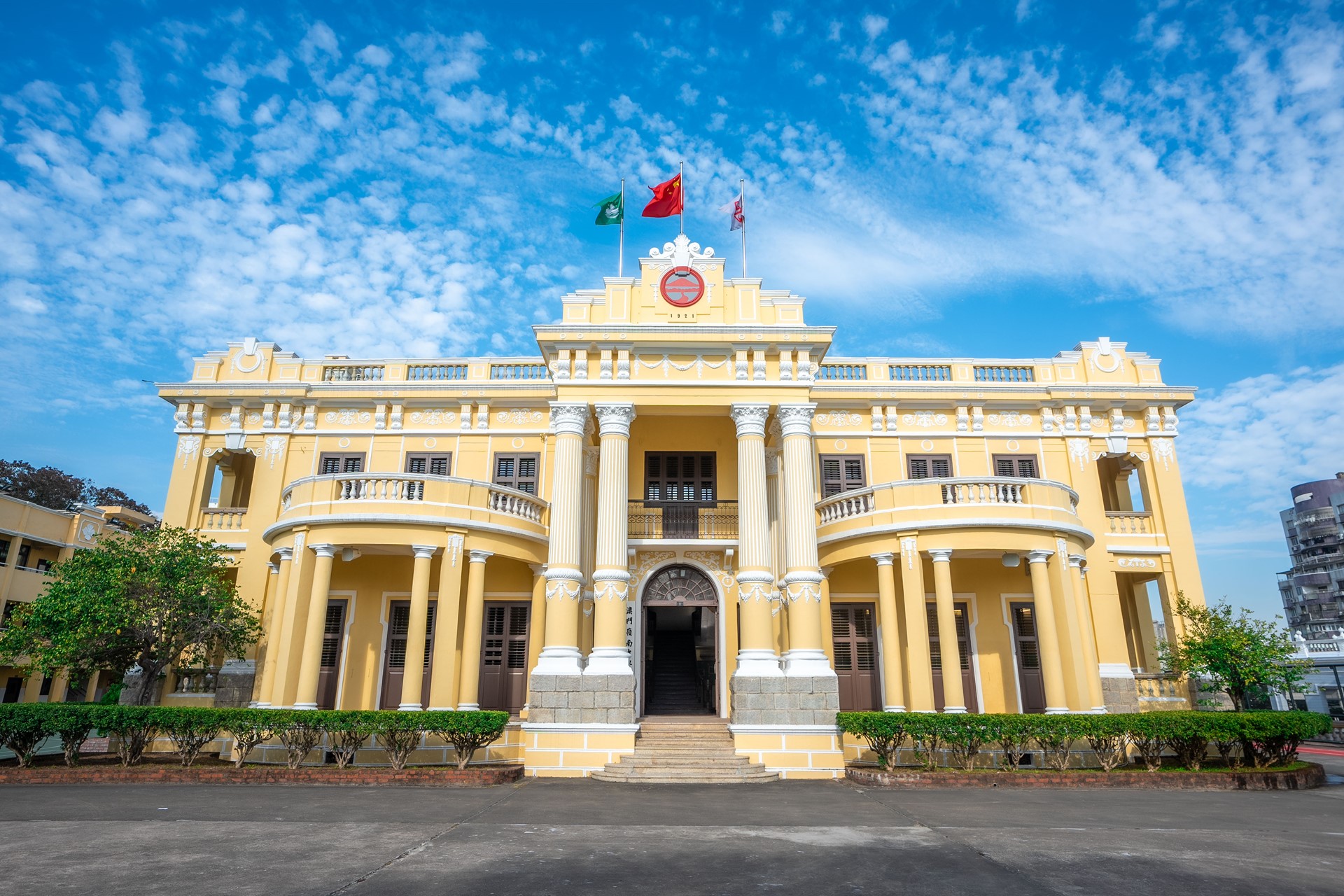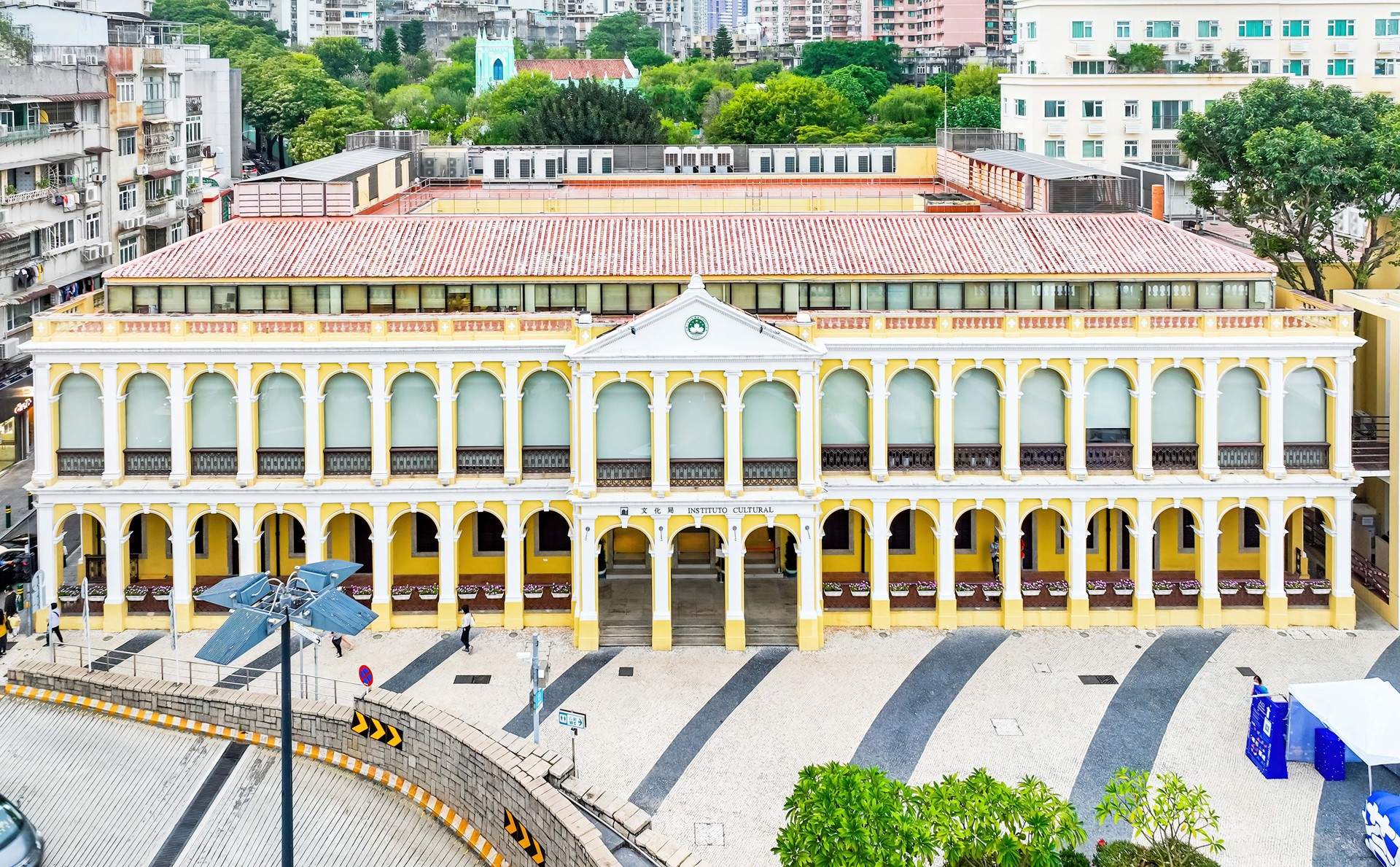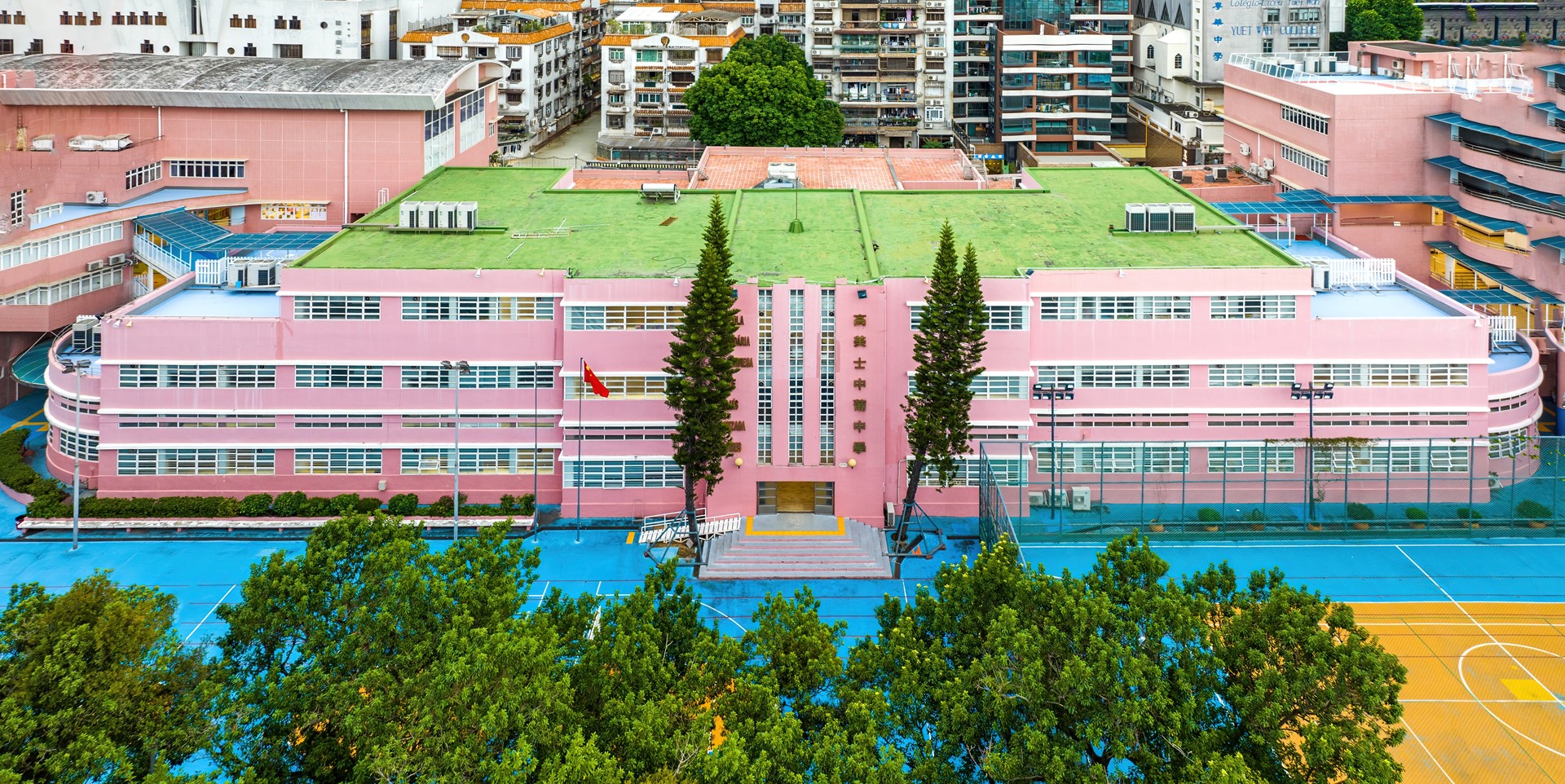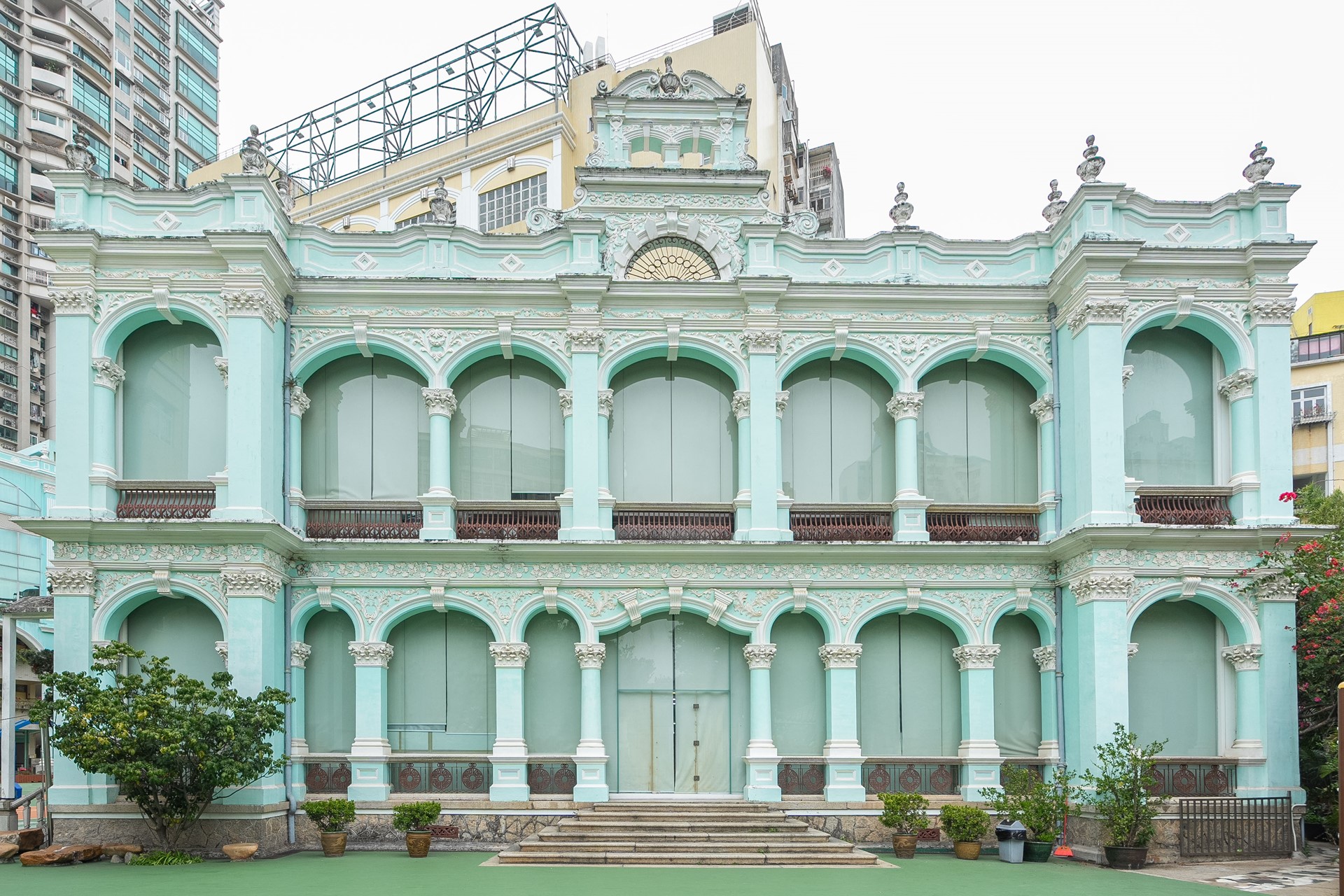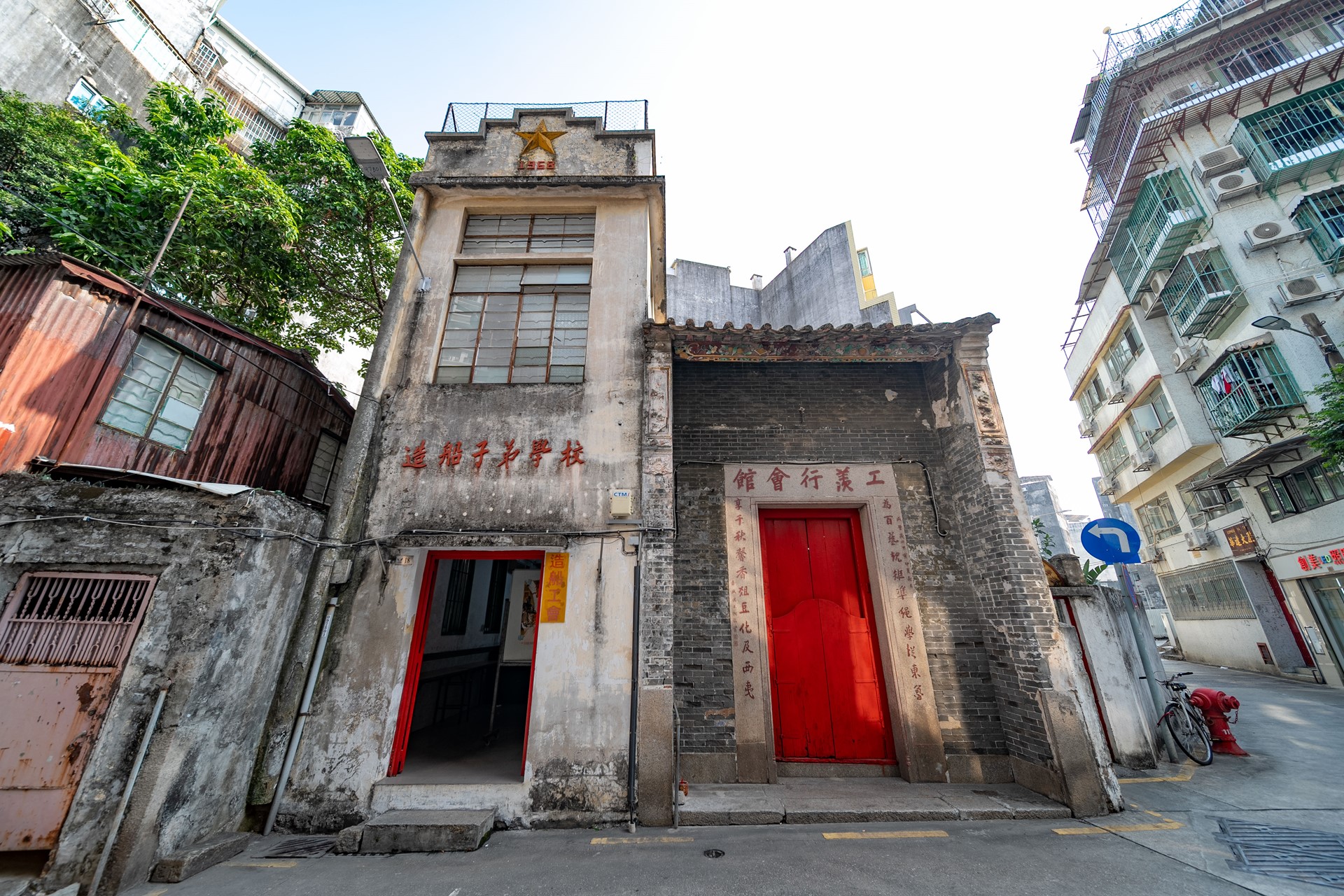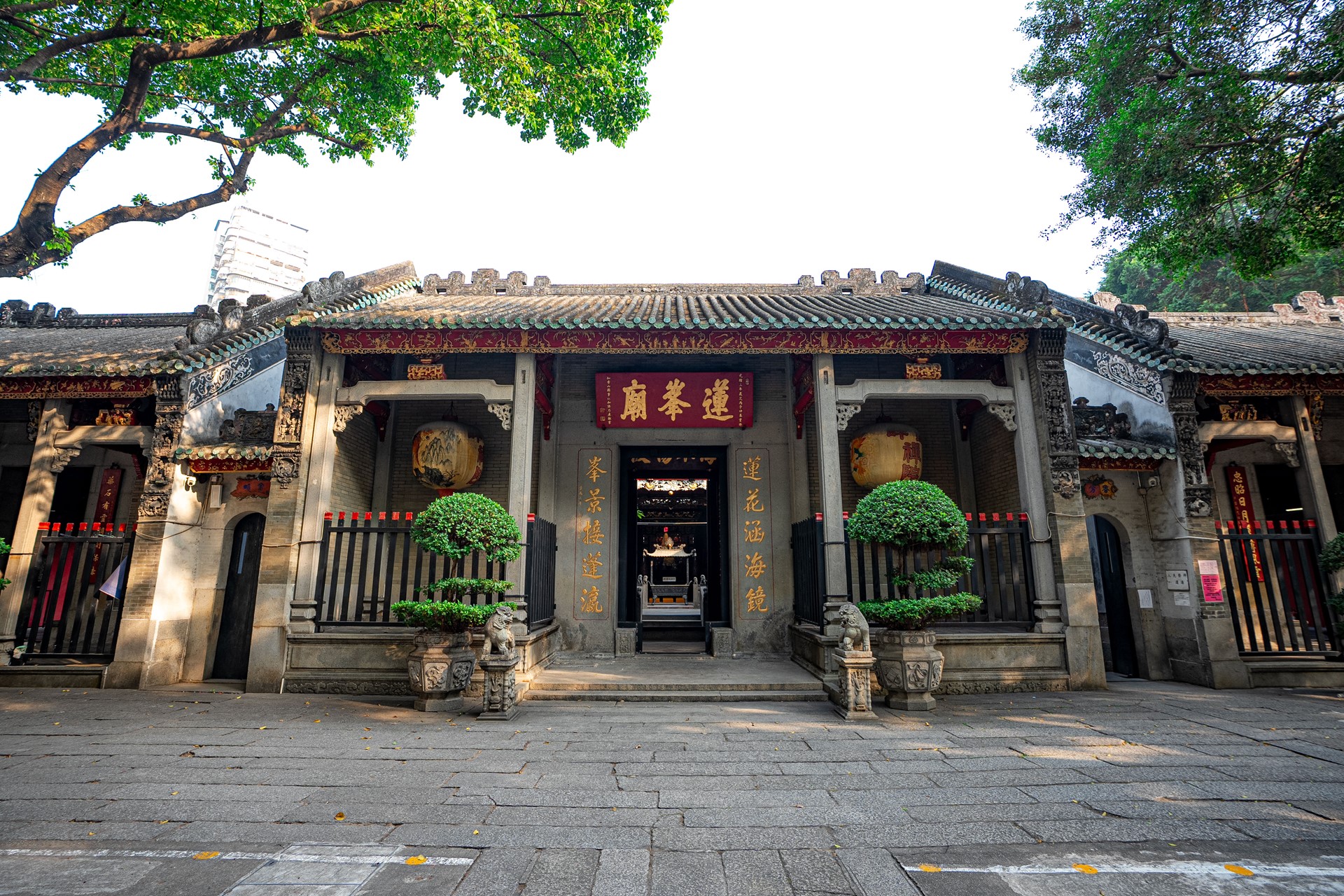The Lingnan Middle School building is located at no. 1, Estrada dos Parses, in Guia Hill, and it is an old eclectical style palatial residence. This two-story building features an imposing main façade marked by a central portico supported by eight columns of colossal order and topped by a stepped pediment, which gives access to the main entrance. This portico is flanked by two semicircular porches at the ground floor level supported by columns. The exterior is painted in yellow with white trimmings, adding to its magnificence.
Completed in 1921, the building was originally named Vila Alegre and owned by the renowned Macanese lawyer Francisco Xavier Anacleto da Silva. It was one of the three major private garden mansions on Guia Hill. In 1937, the building was transferred to the Macao Postal Savings. With the outbreak of the Resistance War against Japanese Aggression, the building was temporarily used to accommodate Portuguese refugees who had fled to Macao. Starting from June 1938, the building has been used for educational purposes to this day.
In 1919, Lingnan University began organizing Tongzhi Primary School in Xiguan, Guangzhou, which was the predecessor of the Macao Lingnan Middle School. In 1930, Tongzhi Primary School was named the Second Middle School Affiliated to Lingnan University (also known as Lingfen Middle School). In 1937, the school moved to Macao upon the outbreak of the War against Japanese Aggression, and temporarily rented the premises of the Zhang Garden in Jardim da Flora and the Chan Garden in Barra to run its operation, and then, in August 1938, started to rent the present site on Estrada dos Parses. After the end of the war, the school was renamed Macao Lingnan Middle School, which added a senior secondary curriculum. In 1948, the school purchased the current building and has continued its operation there ever since.
Founded in Guangzhou, Lingnan University established primary and secondary affiliated schools, as well as branches in Hong Kong and Macao, fully reflecting the educational continuity and close connections among Guangdong, Hong Kong and Macao, which share the same origin.
